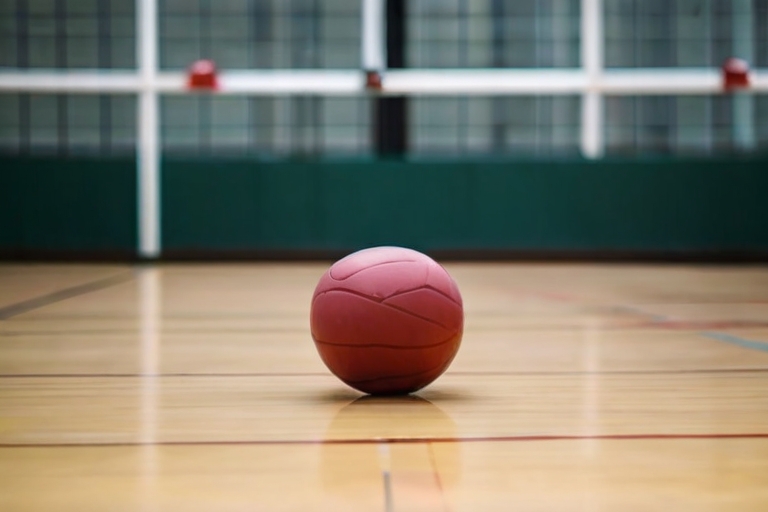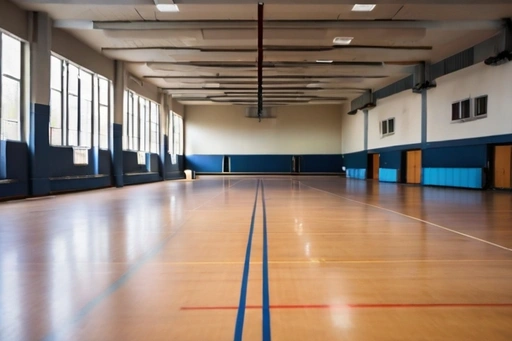
Physical Education in the USA: Great Statistics and Impressive Impact
Table of Contents
Physical Education in the USA:
Imagine a classroom where learning goes beyond textbooks and worksheets. Instead of static desks, there’s the vibrant energy of movement, laughter, and teamwork. This isn’t a fantasy; it’s the potential of physical education (PE), a crucial component of a well-rounded education that fosters not just physical fitness, but also mental well-being, social skills, and academic success. Understanding the current state of Physical Education in the USA through statistics is vital for educators, policymakers, and parents alike to create an environment where all students can thrive. This article delves into the statistics and trends of PE in the USA, exploring participation rates, curriculum variations, and the impact on student health and achievement.
Before diving head first into Physical Education in the USA, feel free to take a look at the LearningMole YouTube channel! Here is a great video on “How do bones work?”.
Importance of Physical Education in the USA:
Physical education (PE) transcends the athletic field, playing a pivotal role in shaping well-rounded individuals. Let’s delve deeper into the multifaceted benefits it offers, exploring its impact on physical, mental, and cognitive development, as well as social and emotional well-being.

Physical Health:
- Combating Obesity and Chronic Diseases: Regular physical activity through PE helps children and adolescents maintain a healthy weight, reducing the risk of obesity, type 2 diabetes, and heart disease. Studies show that active students have higher levels of good cholesterol and lower blood pressure, setting the foundation for lifelong physical health.
- Building Strong Bones and Muscles: Engaging in diverse activities strengthens muscles and bones, improving balance, coordination, and overall motor skills. This reduces the risk of injuries and promotes healthy posture and physical development.
- Boosting Cardiovascular Health: PE increases heart rate and improves cardiovascular endurance, leading to stronger lungs and a more efficient circulatory system. This, in turn, enhances energy levels and stamina, benefiting activities in and outside the classroom.
Mental and Emotional Well-being:
- Reducing Stress and Anxiety: Physical activity promotes the release of endorphins, natural mood boosters that combat stress and anxiety. Engaging in PE can serve as a healthy outlet for managing emotions and promoting a positive outlook.
- Enhancing Self-Esteem and Confidence: Successfully mastering new skills and participating in team activities fosters a sense of accomplishment and self-efficacy. This boosts self-esteem and confidence, contributing to positive self-perception and social interactions.
- Improving Sleep Quality: Regular physical activity regulates sleep patterns, allowing students to fall asleep faster and sleep more soundly. This, in turn, improves their energy levels, mood, and overall well-being throughout the day.
Cognitive Development and Academic Performance:
- Sharpening Memory and Focus: Physical activity increases blood flow to the brain, stimulating the growth of new brain cells and enhancing cognitive function. This improves memory, focus, and concentration, leading to better learning outcomes in the classroom.
- Boosting Brain Development: Studies show that physical activity enhances the development of neural pathways in the brain, promoting critical thinking, problem-solving skills, and decision-making abilities. This equips students to tackle challenges both inside and outside the classroom.
- Improving Academic Achievement: Research consistently demonstrates a positive correlation between physical activity and academic performance. Students who participate regularly in PE tend to score higher on standardised tests, achieve better grades, and exhibit higher levels of academic engagement.
Social and Emotional Skills:
- Fostering Teamwork and Collaboration: PE activities create opportunities for students to work together towards shared goals, developing communication, cooperation, and conflict resolution skills. These skills are crucial for success in various aspects of life, from academics to personal relationships.
- Promoting Sportsmanship and Respect: Learning to win and lose gracefully, and respecting both teammates and opponents, are valuable lessons learned through PE. These experiences cultivate a sense of fairness, empathy, and respect for others, shaping responsible and well-rounded individuals.
- Developing Leadership Skills: Opportunities to lead teams, organise activities, and make decisions within PE classes allow students to hone their leadership skills. This prepares them for future roles in their communities and professional lives.
State of Physical Education in the USA:
While the importance of PE is undeniable, the current state of PE in the USA presents a mixed picture. Let’s delve deeper into the statistics and trends, examining participation rates, curriculum variations, and resource disparities across different regions and demographics.
Prevalence and Participation in Physical Education in the USA:
- National Availability: Approximately 95% of elementary schools offer PE programs, indicating widespread access in principle. However, the picture gets murkier when we consider the frequency and quality of these programs.
- Participation Rates: The national high school average for daily PE attendance is only 26%, highlighting a significant gap between availability and active participation. This rate drops even lower in certain groups, with girls, older students, and students from marginalised communities often showing lower participation.
- State-Level Variations: Significant differences exist across states. Some states mandate daily PE in elementary and middle schools, while others have no such requirements, leading to a patchwork of approaches and participation rates.
Curriculum and Instruction of Physical Education in the USA:
- Diversification of Approaches: Traditional team sports remain a common focus, but there’s a growing trend towards more inclusive and skill-based curriculums incorporating activities like dance, yoga, and fitness conditioning.
- Standardised Requirements: Although some states have established curriculum standards, many districts have autonomy in designing their own PE programs, leading to diverse approaches and uneven quality.
- Technology Integration: The use of technology is gradually increasing in PE, with interactive games, fitness trackers, and virtual reality experiences offering innovative ways to engage students and track progress.
Facilities and Resources:
- Access to Safe Spaces: While most schools have gymnasiums, their age, condition, and suitability for diverse PE activities vary considerably. Some schools, particularly in low-income communities, lack adequate facilities or have limited access to outdoor spaces suitable for PE.
- Equipment Availability: The range and quality of equipment available for PE classes also differ significantly. Schools with limited resources may lack age-appropriate equipment or have outdated materials, hindering skill development and engagement.
- Qualified Teachers: Finding and retaining qualified and passionate PE teachers remains a challenge, particularly in underserved communities. Larger class sizes and limited support can hinder teachers’ ability to provide individualised attention and create engaging learning environments.
Geographic and Socioeconomic Disparities:
- Rural vs. Urban: Rural schools often face funding and resource limitations, leading to smaller PE programs, limited facilities, and fewer qualified teachers compared to urban areas.
- Socioeconomic Inequality: Students from low-income families are more likely to attend schools with larger class sizes, fewer resources, and limited access to quality PE programs. This exacerbates existing health and achievement disparities.

Participation Rates and Access to Physical Education in the USA:
Understanding national statistics on PE participation paints a broad picture, but it’s crucial to delve deeper into the disparities that reveal the true challenges. This section explores participation rates across various demographics and examines the complex issue of access to quality PE programs.
Participation Rates: Beyond Averages:
While the national average of frequency among high school students averaged 2.1 days per week. This offers a starting point, it masks significant variations across demographics:
- Age: Participation rates decline with age, particularly among girls. By high school, the gap between genders widens, with boys participating at a higher rate than girls.
- Gender: Cultural norms, limited access to certain activities, and lack of confidence can contribute to lower participation among girls. Addressing these factors with inclusive activities and supportive environments is crucial.
- Race and Ethnicity: Minority students, particularly Hispanic and Black students, often show lower participation rates compared to white students. Socioeconomic factors, cultural norms, and limited access to quality programs contribute to this disparity.
- Socioeconomic Status: Students from low-income families are more likely to attend schools with larger class sizes, fewer resources, and limited access to quality programs. This perpetuates existing health and achievement disparities.
Factors Impacting Participation in Physical Education in the USA:
Understanding the “why” behind these disparities is critical for creating equitable access:
- Interest and Skills: Not all students enjoy traditional team sports, which can alienate those with different interests or skill levels. Offering diverse activities and fostering a sense of inclusion are essential.
- Body Image and Confidence: Concerns about body image and a lack of confidence can be major barriers, particularly for girls and adolescents. Creating supportive environments and celebrating individual progress can make a difference.
- Transportation and Logistics: Lack of transportation or inflexible schedules can limit access to after-school programs or participation in PE classes held outside regular school hours.
- Cultural Norms and Family Support: Cultural perspectives on physical activity and family support systems can influence participation, highlighting the need for community engagement and culturally responsive programs.
Access to Quality Physical Education in the USA:
Simply having a PE program isn’t enough. Quality matters too, and disparities exist:
- Qualified Teachers: Access to trained and passionate PE teachers is crucial for creating engaging and effective programs. However, teacher shortages are prevalent, particularly in underserved communities.
- Class Size and Individualised Attention: Large class sizes limit personalised guidance and support, making it difficult for students with different needs or skill levels to thrive.
- Facilities and Equipment: Outdated gyms, limited outdoor spaces, and lack of age-appropriate equipment can hinder student engagement and skill development.
- Inclusive Curriculum and Activities: Traditional, sport-focused curriculums may exclude students with different interests or abilities. Offering diverse activities and promoting inclusivity is essential.
Curriculum and Instruction for Physical Education in the USA:
The heart of a quality PE program lies in its curriculum and instruction. Yet, this landscape varies widely across the USA, with diverse approaches, standards, and challenges impacting student experiences. Let’s dive deeper to explore the different frameworks guiding PE and the opportunities for creating more effective learning environments.
Curriculum Frameworks:
- Skill-Based: Focused on developing fundamental movement skills and motor literacy, this approach lays the foundation for lifelong physical activity and diverse skill mastery. Examples include SHAPE America’s National Standards and SHAPE America’s SPARK.
- Sport-Based: Emphasising specific sports like basketball or volleyball, this approach can foster teamwork, passion, and competition. However, it risks excluding students with different interests or skill levels.
- Inclusive: Promoting inclusivity through diverse activities, adapted options, and a focus on individual progress caters to various needs and fosters engagement for all.
- Health-Based: Combining physical activity with health education components, this approach addresses nutrition, well-being, and healthy lifestyle choices alongside physical skills.
State and District Variations:
- Standardised Requirements: Some states mandate specific curricular frameworks or minimum PE time, while others offer broad guidelines or leave decisions to districts. This creates a patchwork of approaches and opportunities.
- Local Adaptations: Districts and schools adapt chosen frameworks to their resources, facilities, and community needs, leading to further variations in implementation.
Challenges and Opportunities:
- Limited Time: Competing academic demands often prioritise core subjects, squeezing out valuable PE time, and hindering in-depth skill development and exploration.
- Assessment: Traditional assessments based solely on sport-specific skills can exclude students with different strengths and discourage participation. Utilising diverse assessment methods that gauge progress and participation can be more inclusive.
- Technology Integration: Interactive games, fitness trackers, and virtual reality offer opportunities for personalised learning, skill assessment, and engaging activities. However, equitable access to technology and effective integration remain challenges.
- Professional Development: Supporting teachers with ongoing professional development opportunities in diverse teaching methods, technology integration, and inclusive practices is crucial.
Moving Towards Transformation:
- Prioritisation of PE: Advocating for increased time, resources, and support for PE programs ensures its rightful place as a critical component of student well-being.
- Curriculum Flexibility: Implementing adaptable frameworks that cater to local needs and allow for personalisation, while emphasising inclusivity and diverse activities, can broaden engagement.
- Technology as a Tool: Integrating technology thoughtfully and inclusively, addressing access disparities, can enhance learning, personalise experiences, and provide engaging assessment methods.
- Collaboration and Sharing: Establishing networks for PE professionals to share best practices, resources, and innovative approaches can foster continuous improvement across schools and districts.

Facilities and Resources for Physical Education in the USA:
Quality facilities and resources are essential for effective Physical Education in the USA:
- Gymnasiums: Access to safe and well-equipped gymnasiums is crucial for diverse activities.
- Equipment: Availability of age-appropriate and diverse equipment ensures engagement and skill development.
- Qualified Teachers: Trained and passionate PE teachers can create engaging learning environments and cater to individual needs.
Unfortunately, disparities exist:
- Funding: Schools in low-income communities often struggle with limited funding, resulting in outdated facilities, lack of equipment, and fewer qualified teachers.
- Location: Rural schools may have limited access to resources and specialised facilities compared to urban areas.
Impact of Physical Education on Health:
Statistics underscore the positive impact of Physical Education in the USA on student health:
- Physical Fitness: Students participating in regular PE tend to have higher levels of cardiovascular health, muscular strength, and bone density.
- Mental Health: Studies show reduced rates of depression, anxiety, and improved self-esteem among students who actively participate in PE.
- Academic Performance: Research indicates a positive correlation between physical activity and academic achievement in areas like math, reading, and cognitive function.
Challenges and Barriers to Physical Education in the USA:
Despite the benefits, numerous challenges hinder the quality of Physical Education in the USA:
- Budget Constraints: Limited funding often leads to larger class sizes, fewer resources, and inadequate facilities.
- Time Constraints: Competing academic demands may squeeze out PE time, reducing its frequency and impact.
- Competing Priorities: Standardised testing pressures and standardised curriculums often prioritise core subjects, overlooking the crucial role of PE.
- Teacher Shortages: Finding and retaining qualified PE teachers, particularly in underserved communities, remains a challenge.
Policy and Advocacy for Physical Education in the USA:
Policy and advocacy play a crucial role in promoting quality Physical Education in the USA:
- State-Level Requirements: States with mandated PE time and clear curriculum standards show higher participation rates and improved student outcomes.
- Federal Funding Programs: Initiatives like the SPARK (Physical Activity and Recreation for Kids) program provide grants to support physical activity and PE programs in schools.
- Advocacy Organisations: Groups like SHAPE America and the National Association for Sport and Physical Education work tirelessly to advocate for quality PE policies and funding.
Community Engagement and Partnerships:
The community plays a vital role in supporting PE:
- Local Sports Organisations: Partnerships with sports leagues, teams, and fitness centres can offer extracurricular activities and expertise.
- Parks and Recreation Departments: Utilising public parks and facilities for PE classes and community-wide events promotes active lifestyles.
- Non-Profit Organisations: Collaborations with organisations like the YMCA or Boys & Girls Clubs can provide additional resources and programs.
Future Outlook for Physical Education in the USA:
Despite challenges, the future of PE holds promise:
- Technology Integration: Interactive games, fitness trackers, and virtual reality experiences can enhance engagement and personalise learning.
- Data-Driven Approaches: Utilising data to track student progress and program effectiveness can guide improvement efforts.
- Community Partnerships: Stronger community collaboration can broaden access to resources and promote lifelong physical activity habits.
Conclusions of Physical Education in the USA:
Physical education statistics paint a complex picture of the current state of PE in the USA. While participation rates and access vary, the evidence is clear: PE is not just an optional activity; it’s a crucial component of a well-rounded education, impacting students’ physical, mental, and academic well-being. Addressing disparities, ensuring quality programs, and fostering community partnerships are key to unlocking the full potential of PE for all students.
By prioritising quality PE, we can empower students to lead healthy, active, and successful lives, contributing to a stronger and more vibrant society. Let’s move beyond statistics and turn the potential of PE into a reality for every child.
Call to Action:
Join the movement! As educators, advocate for increased resources and quality PE programs in your schools. As parents, encourage your children to participate actively and support efforts to strengthen PE. As policymakers, invest in initiatives that promote access to quality PE for all students. Together, let’s ensure that every child has the opportunity to experience the transformative power of physical education.
If you have enjoyed this blog post about Physical Education in the USA, be sure to check out some of our other insightful articles at LearningMole! If you are further interested in Educational content be sure to check out our post about Online Learning!


Leave a Reply